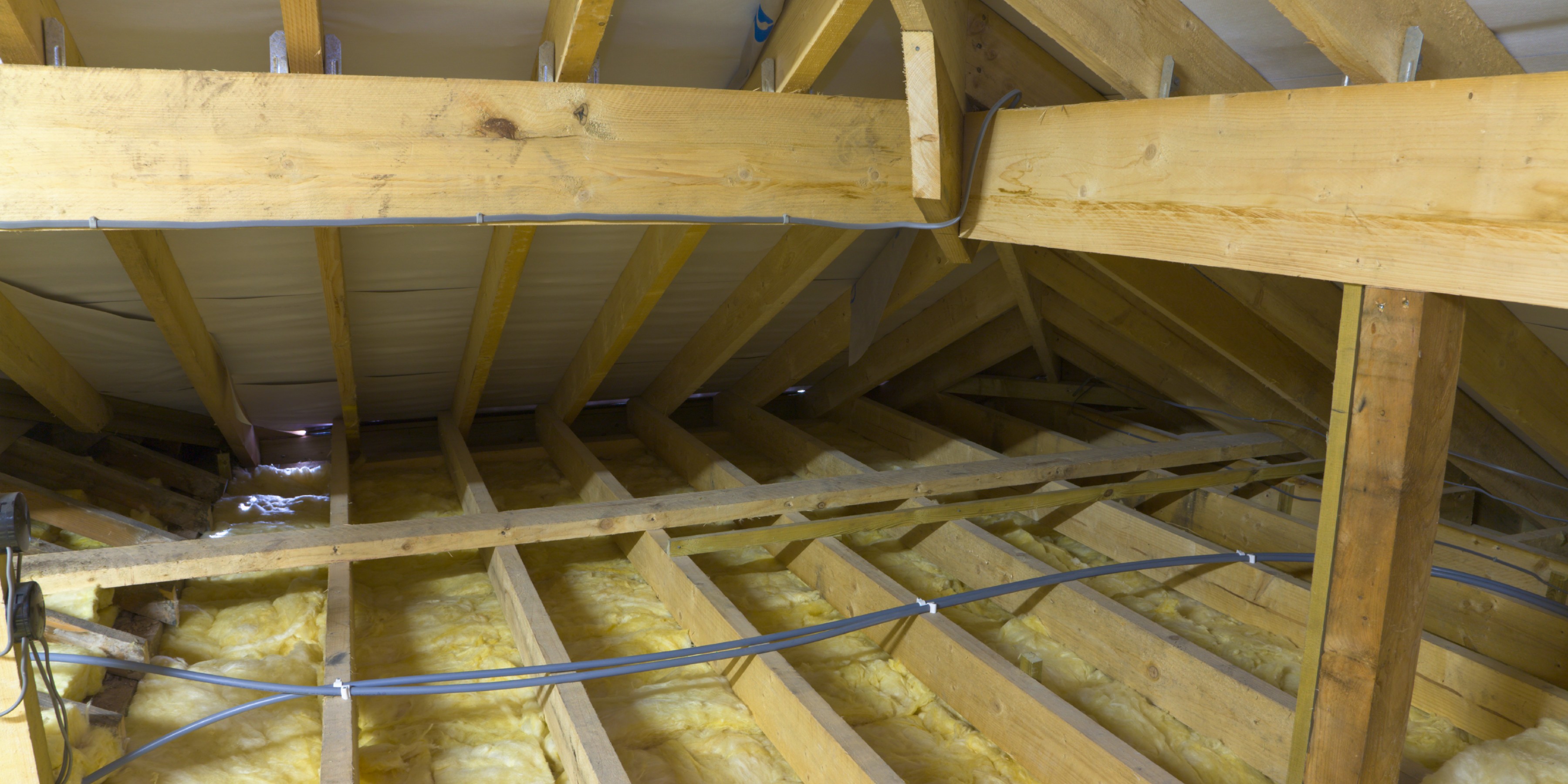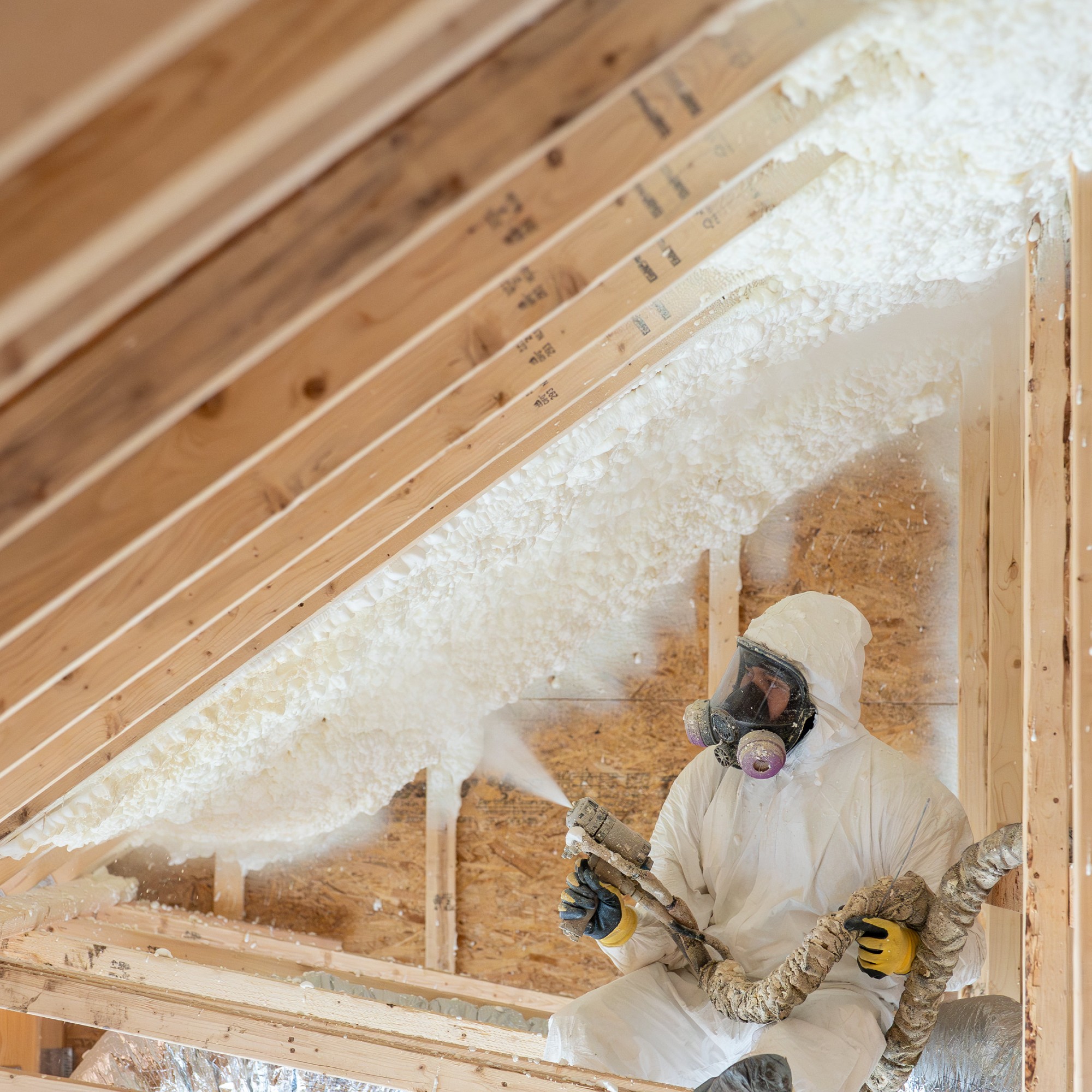This is how much loft insulation you need, and how thick it should be, according to the experts — plus whether you need to replace old insulation before adding new
Adequate loft insulation is essential if you want to prevent heat loss through your roof


As temperatures drop as we head into winter, it's no wonder that attention is turning to how we can keep our homes warm and comfortable. While an adequate heat source is key, your home's loft insulation will also be essential for keeping heat in, instead of letting it escape through the roof. But how much loft insulation do you need for it to be effective?
'Up to a quarter of your home’s heat can escape through the roof,' says Lee Millington, Installations Director at British Lofts. 'That’s a huge loss, especially when energy prices are where they are today. Good insulation makes your home warmer, quieter, and greener, and once it’s in, it can last for 40 years or more.'
For insulation to work as it should, you need to ensure you are installing the right amount, among other loft insulation dos and don'ts. To help, I asked multiple loft insulation experts how much loft insulation you need and how thick it should be, as well as how you can choose the right type.
How much loft insulation do I need?
It can be tricky to know how much loft insulation you need, but the answer will depend on the size of your home, how much insulation you have already, and your home's current energy performance.
'The amount required depends on what insulation, if any, is already in place and whether the existing loft insulation meets Building Regulations requirements,' explains Tom Garrigan, Technical Director at the Building Services Research and Intelligence Association (BSRIA). 'The loft should achieve a minimum U-value of around 0.16 W/m²·K, meaning it offers excellent insulation and keeps heat loss to a minimum. A competent assessor can assess the current insulation and determine whether additional material or a full upgrade is needed to reach the standard.'
Tom adds: 'A qualified assessor can safely inspect the loft, confirm the existing insulation's performance, and advise whether improvements are necessary.'
But remember, if you want to keep your home warm in winter, it's not a good idea to look at loft insulation in isolation. You should also look at other areas like your walls, windows and floors, as well as your boiler and any heat emitters, whether radiators or underfloor heating, to ensure they're all working towards the same goal of heating your home efficiently and keeping the heat you do generate in.
Sign up to our newsletter for style inspiration, real homes, project and garden advice and shopping know-how
How thick should loft insulation be?

Spray foam insulation can be effective in a loft, but it's absolutely crucial it's installed correctly by a professional.
When it comes to the specific thickness of loft insulation, experts say there is a depth you should aim for.
'The golden number is 270mm,' explains Lee. 'That’s the recommended depth by the Energy Saving Trust for most UK homes, and it’s where you’ll see the biggest efficiency gains. Anything less and you’re quite literally losing money through your roof.'
If you can, it's worth checking your existing loft insulation to see if it's the recommended thickness. You'll need a rule or tape measure. 'If you can still see the top of your joists or measure less than 200mm, you’re under-insulated,' says Lee. 'It’s worth topping up to the full depth to meet current standards.'
What type of loft insulation can you get?
There are a few different types of loft insulation that you might come across, and it's not necessarily a one-size-fits-all decision. It's worth speaking to an expert to choose the right type of insulation for your loft structure and the level of insulation required.
- Blanket or Roll Insulation (Mineral Wool, Glass Fibre, or Natural Wool). 'Still the most common option, cost-effective, DIY-friendly, and great for most standard lofts,' says Lee
- Blown or Loose-Fill Insulation. 'Ideal for hard-to-reach or uneven spaces,' says Lee. 'It’s fast to install professionally but can settle slightly over time.'
- Rigid Insulation Boards. If you have plans to convert your loft into living space, insulation boards may be helpful in order to maximise headroom.
- Spray Foam. Spray foam insulation can be effective, but it's important that it's professionally installed correctly. Lee explains: 'While it offers airtightness, it can interfere with roof ventilation if misapplied, and some lenders won’t approve mortgages where spray foam’s been used incorrectly.'
For most homes, Lee recommends two layers of mineral wool insulation, one between joists and another laid across them. 'It gives the best balance of warmth, breathability, and cost-effectiveness,' he says.
FAQs
Can you put too much loft insulation down?
While you want to make sure you have enough loft insulation to keep your home warm, it is actually possible to put too much down.
Too much loft insulation, and you could inadvertently cause issues with poor ventilation which can lead to trapped moisture and damp.
Not only is it not cost-effective to pay for more loft insulation than you need, fitting too much could lead to squashing the insulation to make it fit. This will impact how effectively the insulation works, which means you could end up making heat loss worse rather than better.
Should you remove old loft insulation before adding new?
There's no blanket rule that old loft insulation should be removed before you add new, but it's important to assess the state of your existing insulation first, looking out for signs that it needs replacing.
If it's showing signs of age, damage, mould, or pest infestation, then it should absolutely be replaced. However, if it is still in good condition but there's just not enough of it, you can add new insulation over the top to get to the required depth.
If you are upgrading the insulation at home, make sure you avoid the areas you should never insulate so that you don't inadvertently cause any issues with damp or mould.

Sarah Handley is Ideal Home’s Renovation Editor. She joined the team full time in September 2024, following three years of looking after the site's home finance content. As well as all things renovation, Sarah also looks after our Home Energy content, which covers all aspects of heating and insulation as well as tips on how homeowners can reduce their energy usage. She has been a journalist since 2007 and has worked for a range of titles including Homebuilding & Renovating, Real Homes, GoodtoKnow, The Money Edit and more.